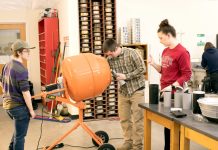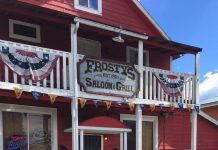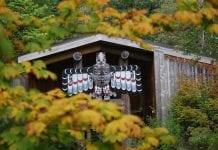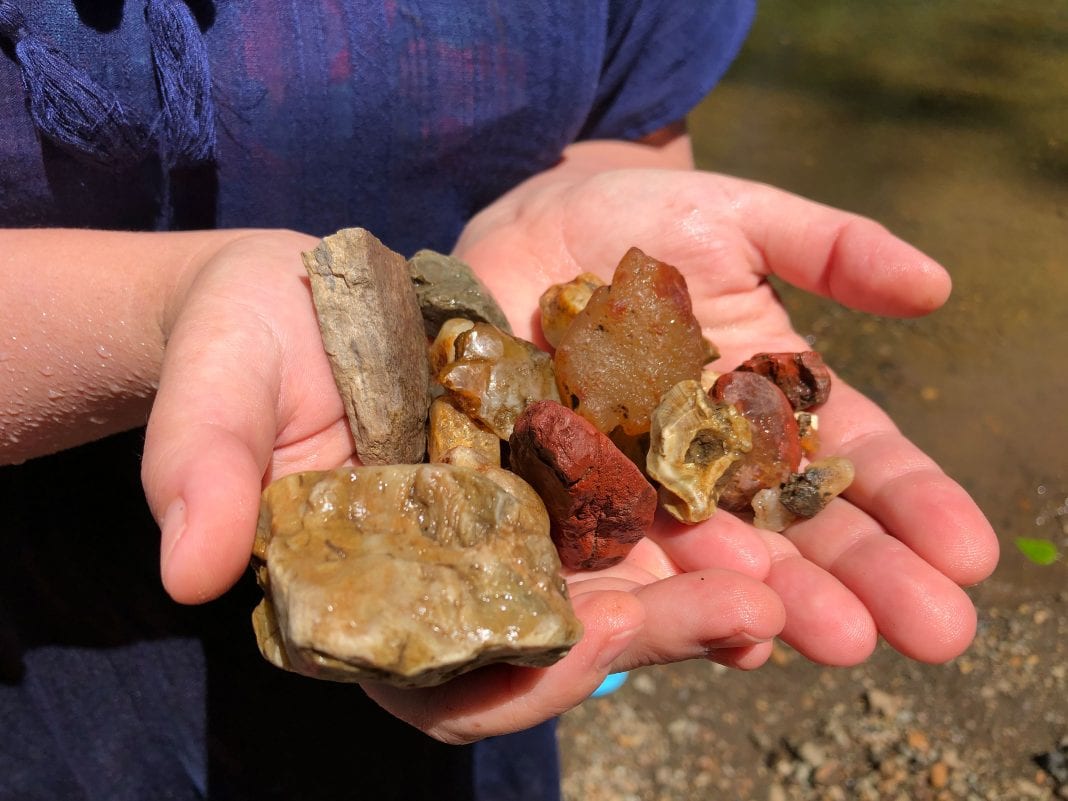According to the Washington State Department of Natural Resources, Washington has an extraordinary variety of rocks and fossils. Collectors can find beautiful agates, amethysts, garnets, jaspers, opals, and even the occasional nugget of gold. The state also has abundant petrified wood, which is the Washington State Gem. For one local couple, Alisha and Dave, together with their three young children, searching for treasure beneath their feet right here in Lewis County is always an adventure while rockhounding.
Alisha spent a lot of time outside as a youth, walking, hiking and rock hunting. “My parents were very adventuresome,” she said. “There is a good selection of rocks in Utah where I grew up —fossils, geodes, pyrites, and topaz. I kind of got into collecting rocks as a kid.”
After she married and moved to Arkansas, Alisha and her husband, Dave, visited a private crystal mine where her aunt had taken her as a teenager. Crystals were lying everywhere, uncut and in their natural form. “I got the bug, my husband got the bug, and our kids got the bug for rock hunting,” she said.
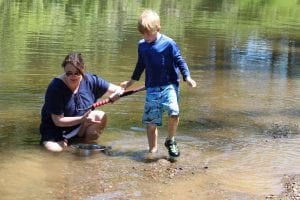
“For my first year of living in Washington State, Dave bought me a book called “Rockhounding Washington” by Lars W. Johnson. The book has many detailed maps and directions for local rock hunting locations. We started going around checking out the sites and collecting rocks,” Alisha said. “We decided it was something fun we can do with our family.”
Websites like Facebook and Etsy help identify the differences between rocks and minerals, coralized and petrified wood, and the many, many other types of stones you will find almost everywhere you look. There are even some Facebook groups like Washington Rock Hounds where people share their experiences and give advice.
Even the children knew the terms. When four-year-old Eli was asked about minerals, he stood up straighter and said, “A mineral is when there is lots of stuff in the ground, and sometimes it gets together to make really cool stuff.”
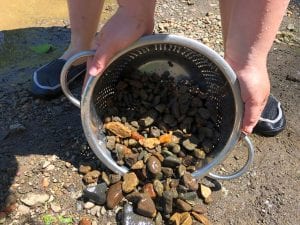
Before you leave to find the “really cool stuff,” you need the right equipment. It doesn’t have to be expensive and can be “borrowed” from grandma’s kitchen with her permission. You will need both long and short shovels to fit your body, pickaxes to break up the ground quickly, protective gloves and glasses, small baggies and black sharpies to mark ownership of your findings, bottled water and buckets, a colander for panning sand and mud from rocks, and river walking shoes or shoes you don’t mind throwing away.
A few trips to the river or sand bar, and you will find more items to add to your list. Don’t forget life jackets for everyone on your expedition if you are near deep water, and keep your eyes on tools to make sure they don’t float away. You don’t want to lose anyone or anything on your trips.
Importantly, make sure you have permission before you start to dig. It’s not unusual for the police to be called to talk with unwanted rock hounds digging on private property. The Bureau of Land Management owns pretty much everything that isn’t privately owned so check their website. Rockhounding or fossil hunting is not permitted in national parks, national monuments, national wildlife refuges, national scenic areas and tribal lands.
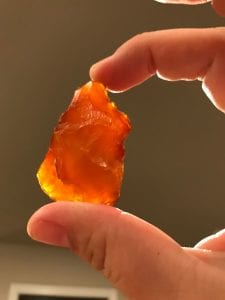
Also, be careful about buying mining claim shares. “You can buy those claims, but they are awfully expensive,” Alisha said. “I saw one once that was $12,000 for a 400-square-foot claim on a creek that had all sorts of neat crystals and rocks. Usually, the people who buy those claims do it as a business opportunity.”
The region offers some fantastic sites to consider for rockhounding. Hansen Creek is probably one of the top known sites in the state, combining camping and crystals (think the filming location for the movie Twin Peaks). Amethyst crystals, quartz crystals and pyrite are here, along with Thundereggs, a form of agate that looks like an ordinary rock on the outside.
Ellensburg Blue Agates are found within or around Ellensburg, mostly on private property. You can find them in Reecer Creek and Green Canyon areas. While it may be hard to find a good public area to search for these rare agates, for the price of $5 a person, you can dig at the Rock’n’tomahawk Ranch for a day. Camping is located nearby.
The bright red-orange color of the carnelian agate is worth the drive into the country around Chehalis. These stones are abundant in the Willapa Hills area of southwest Washington and tend to find their way into the local rivers such as the Newaukum and the Chehalis. Several parks located in these areas, like Alexander Park and Stan Hedwall, are popular locations for local rockhounding aficionados. Pick your season wisely, however. It tends to flood there.
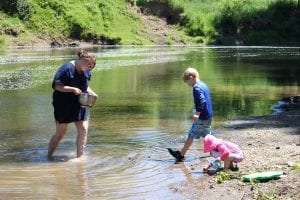
Outdoor adventure can take different turns, however. Dave and his oldest son, Henry, recently decided to take their first father-son hike into the Lewis River Campground near the Ape Caves in Skamania County. They planned to hike in, look for rocks, and spend the night. The constant drip of rain and the inch of rain on the tent floor was daunting. Neither one got much sleep, but they both admit the area was beautiful.
With all the opportunities for rock hunting in Lewis County, it’s wonderful there is a group with Lewis County Rock and Gem Society for the community to share information and their amazing finds.
One last piece of advice for beginners: “The rocks you pick up yourself are more beautiful than the rocks you buy in the store.” And they have better stories!









